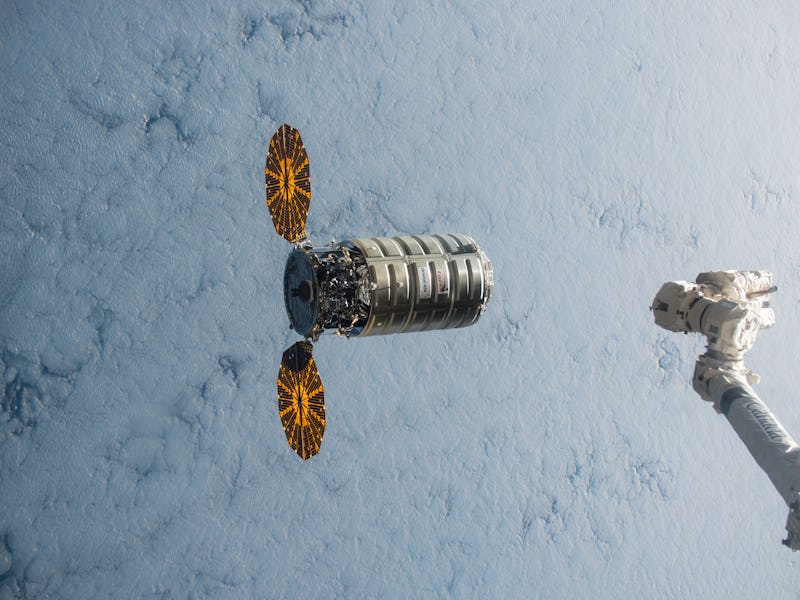NASA’s Next ISS Resupply Mission is Going to be Lit
Here's a look at some fiery experiments onboard.

Orbital ATK’s Cygnus spacecraft is set to blast off from Wallops Flight Facility off the Eastern Shore of Virginia next week, ferrying over 5,000 pounds of precious cargo to the International Space Station. Tucked inside is a hodgepodge of research investigations, including a few that will start a literal fire in outer space.
Earlier this year, NASA intentionally lit a fire in a different Cygnus vehicle after it undocked from the space station. With no crew on board and the spacecraft set to burn up in the atmosphere, it served as the perfect test bed for the first iteration of the Spacecraft Fire Experiment — aka Saffire-I — yielding critical data about the nature and behavior of unanticipated fires in zero gravity as part of NASA’s effort to create better safety protocols for astronauts in space.
The second iteration, Saffire-II, focuses on igniting several smaller fires as opposed to one larger one, and understanding how they might spread in a confined spacecraft.
Dan Tani, former astronaut and current senior director of mission and cargo operations for Orbital ATK explained that, from an astronaut’s point of view, the biggest fear living on the space station is that a fire will break out.
By intentionally setting fires in the Cygnus spacecraft, and analyzing how they spread, scientists can control the blaze, and better protect astronauts on orbit. “Every vehicle on Earth have all been the subject of full-scale fire testing,” explained Dr. David Urban, Saffire’s principal investigator, during a news teleconference. “Prior to Saffire-1, no space agency has had the ability to test flames in space and how they burn. We are changing that.”
But before Cygnus goes out in a blaze of glory, it will first deliver a unique combustion experiment to the ISS. Dubbed Cool Flames by NASA, this mission will investigate the chemistry behind low-temperature combustion.
Humans have been milking the benefits of fire for thousands of year, yet we still don’t know everything about it. Previous fire-related studies, in particular a set of experiments known as the Flame Extinguishing Experiment (aka FLEX), revealed some peculiar results.
Astronauts noticed that when large droplets of heptane fuel were ignited, the resulting flames went out twice — indicating that after initial flame went out, a cooler and mostly invisible flame continued to burn before extinguishing.
Scientists didn’t expect to see this during the FLEX experiments because this type of cool flame combustion is rarely observed on Earth. However, in the reduced gravity environment of the space station, and with very little hot air rising, the conditions are just right for these types of flames to form. NASA researchers hope to observe these cool-burning flames for up to two minutes, enabling them to get a good look at how they form. That data will help engineers who want to develop the next generation of environmentally-friendly, combustible engines.
Orbital’s launch will take place on October 13, at approximately 9:13 p.m. Eastern Time. NASA will broadcast the launch live on NASA TV and from the agency’s website. It’s unclear yet when Saffire-II will take place, but it’s almost certain NASA will make the footage of this version available to the public, as it did for Saffire-I — and it’s probably going to look just as riveting.